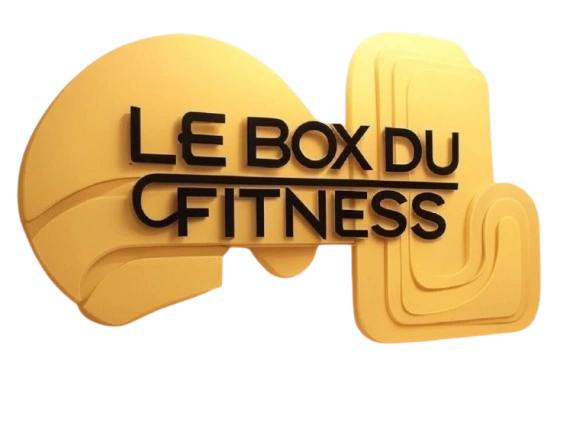Not Just for Rehab: Using Balance Boards to Enhance Exercise
Balance board workouts are a training method involving a series of standing, weight-bearing exercises performed on an unstable surface.
They aim to train the muscles around the ankle and improve balance .
Commonly used as part of athlete rehabilitation and conditioning programs, balance boards can also target upper body stability and core strength.
This article covers the basics of the balance board, such as the benefits, drawbacks, and exercises that target all major muscle groups.
What is a balance board?
Balance boards, which include trainboards and balance boards, are a fitness tool that you can stand on while performing exercises to improve balance and posture, aid in rehabilitation, prevent lower body injuries, and increase core strength, among other benefits.
There are different balance boards out there, but ultimately it's what works best for you that matters.
A balance board is usually made of wood and has a flat top and an unstable dome-shaped bottom in the center of the board. This allows the board to move in different directions.
Rocker boards can be rectangular or have a curved U-shape, allowing you to move from side to side or front to back.
Round balance boards, also called wobble boards, allow you to move side to side and front to back, but they also allow you to tilt the board in a circle (i.e. "around the world").
Physical therapists often use balance boards in the rehabilitation of lower leg injuries, specifically ankle sprains.
Balance boards are also a valuable training aid for sports-related injury prevention and fall protection in people of all ages.
Other benefits of using a balance board include:
- better balance and coordination
- strengthening the muscles of the lower leg, especially the peroneals
- improvement of motor skills
- prevention of injuries, particularly to the ankles
- help with injury rehabilitation
- improved posture
A balance board is a training device that helps improve balance, rehabilitate and prevent injuries, and increase motor skills. There are different styles of balance boards, such as round and rectangular.
Balance Boards for Weight Loss
Balance boards are best known for their role in injury prevention, rehabilitation, and balance training.
However, just as any form of physical activity burns calories, using a balance board can also aid in weight loss.
A small study looked at differences in energy expenditure in 30 healthy adults while they were at work.
The researchers measured participants' energy expenditure while sitting, standing on a flat surface, and standing on a balance board.
Participants performed a total of 1.5 hours of typing – 30 minutes in each of the 3 positions.
The results showed that energy expenditure was 14.2% higher when using a balance board than when sitting.
The number of calories burned during exercise depends on several factors, such as the type of activity, its intensity, and your body weight.
To determine an average, you can use a physical activity calorie counter that allows you to enter body weight, duration, and activity.
While you may not find "balance board" in a list of activities, you can choose a similar activity like calisthenics.
For example, a 160-pound person doing 20 minutes of moderate calisthenics will burn about 80 calories.
Because balance board training increases your heart rate, it increases energy expenditure. Increasing the number of calories you burn per day can contribute to weight loss.
Improve your balance with a balance board
The ability to balance is a function of three body systems:
- the visual system
- the vestibular system
- the proprioceptive system
Specifically, balance board training can improve proprioception, which is the perception of your body's position and movement in three-dimensional space.
In other words, it is your body's ability to perceive its location, movements and actions.
Experts believe that ankle proprioception plays a vital role in balance.
Using balance or wobble boards can train the muscles, ligaments and tendons to work together to create stability in the ankle.
A recent analysis looked at seven randomized controlled trials involving 3,726 people.
It found that proprioceptive training using a balance board or bump board can reduce the risk of a first or recurring ankle sprain.
A small study found that stroke patients who performed rocker board exercises along with conventional physical therapy showed significant increases in balance compared to a control group who did not use the rocker board.
Another small study in 2011 evaluated the effects of rocker board training on physical function in 23 older adults.
Participants who used a rocker board twice a week for 9 weeks showed a significantly greater increase in time spent standing on a rocker board than the control group.
These results suggest that older adults can improve their standing balance through rocker board training.
Improved balance is the most notable benefit of using a balance board. Through various exercises, you can increase your proprioception, strengthen your knees, hips, and ankles, and improve your posture.
Disadvantages of Balance Boards
Like any other piece of exercise equipment, a balance board can be misused or difficult to use, especially if you don't know how to use it.
The biggest drawback of balance boards is ironically one of the reasons they are such an effective fitness tool:
It requires you to balance on an unstable surface.
Improved balance and ankle strength are two of the main benefits of this type of training.
That said, if you have weak or injured ankles, knee or hip problems, or limited balance, using a balance board may present certain challenges and safety concerns, such as an increased risk of falling.
If you're new to exercise or have issues with your ankles, hips, or knees, consider working with a physical therapist or certified personal trainer.
They can teach you how to use the balance board properly.
Balance boards require you to stand on an unstable surface. This can increase your risk of falling, especially if you are new to this type of workout or have certain injuries.
Balance board exercises
If you're new to balance board training, consider doing these exercises near a wall or a stable surface like a table that you can rest one hand on.
You can create a complete workout using a balance board.
To help you get started, here are five exercises that target the major muscles in your body.
-
Basic Balance Sequence
This balance sequence begins with a basic position, moves to a forward-backward tilt, and ends with a lateral movement.
It targets the glutes, quads, hamstrings, calves and core muscles to improve stability, coordination and spatial awareness.
-
Starting position
-
Start by standing on the balance board with your feet hip-distance apart. Your feet should be on the outer edges of the board.
-
Maintain an upright posture and a neutral spine.
-
Choose a central point in front of you to focus on. This can help you maintain balance.
-
Shift your weight so that the edges of the board are off the floor. Your arms can be in front of you or out to the sides.
-
Balance in this position for 30 seconds.
-
Back and forth
-
Slowly tilt the board forward until it touches the ground.
-
Slowly tilt the board back until it touches the floor behind you. You can place your arms in front of you or at your sides.
-
Slowly tilt the board forward and back for 30 seconds.
From one side to the other
-
Get into the starting balance position.
-
Slowly tilt the board to the right side, then to the left side.
-
Tilt the plank from side to side for 30 seconds.
Mini squats
Mini squats on the balance board target the glutes, quads, hamstrings, calves, and core muscles.
- Start in a balance position, but move your feet a few inches toward the edges (a little wider than hip-distance apart).
- Place your arms in front or out to the sides for balance. You can also hold on to a wall or a stable surface to help you keep your balance.
- Slowly bend your knees into a squat position. Go as far as you can while maintaining balance.
- Push through your heels and stand up.
Do 10 to 15 repetitions.
Balance board
The balance board works the abdominal muscles, glutes, hips, legs, shoulders, back and arms.
- Get into a push-up position with your hands on the balance board, slightly shoulder-width apart.
- Your feet will be behind you, either together for more challenge or apart for more stability.
- Engage your core muscles and make sure your body is in a straight line.
- Keep your arms straight, but leave your elbows slightly bent so they are not locked.
Hold this position for 30 seconds or as long as you can.
Push-ups
Balance board push-ups take the board a step further and target the chest, triceps, and core muscles.
-
Start on the floor in a push-up position with your hands on the balance board, slightly shoulder-width apart.
-
Your feet will be behind you, either together for a more advanced variation or apart for more stability.
-
Your body should be in a straight line.
-
Engage your core muscles and keep your head facing forward.
-
Bend your elbows and slowly lower yourself as far as you can while keeping your body in a straight line.
-
Pause and return to the starting position.
Do 5 to 10 repetitions.
Glute bridge
The glute bridge on the balance board targets the glutes, hamstrings, and core muscles.
- Lie on your back with your knees bent, your arms at your sides and your feet pointing towards the balance board.
- Lift your feet and place them on the balance board. The soles of your feet will be in contact with the balance board.
- Engage your glutes and press your feet into the balance board to lift your hips off the floor. Go as high as you can while maintaining balance.
- Contract your glutes and hold this position for a few seconds.
- Slowly lower your body to the floor.
Do 10 to 15 repetitions.
You can target all major muscle groups with balance board exercises. Try the basic balance sequence, mini squats, push-ups, planks, and glute bridges. If you need help balancing during standing exercises, hold on to a wall or stable surface.
The bottom line
Balance boards are a great tool for addressing balance issues, rehabilitation, injury prevention, and overall fitness.
There are different styles of balance boards, but ultimately it's what works best for you that matters.
It is advisable to consult a doctor, physiotherapist or qualified personal trainer before adding balance board training to your training programme, particularly if you have underlying health conditions or ankle, knee or hip injuries.
Overall, balance board exercises are a great way to improve your balance and stability, which will help you enjoy your favorite activities for many years to come.
We have spent a lot of time to offer you the most complete article about what a balance board does for you, we hope you enjoyed learning about it. Do not hesitate to subscribe to the private club, you will also receive our complete book as a gift on the best way to structure your fitness training, you will receive an email in advance when an article appears on our site leboxdufitness.com
Also feel free to check out our store which offers the best fitness, bodybuilding and fitness equipment.
Did you like this article and it helped you learn about what a balance board does for you? Let me know in the comments if you already knew about these concepts and what your experience is on the subject.
If you want to find other Fitness and Wellness articles, take a look at the fitness coaching and leg exercises sections of the blog, you will find plenty of workouts and exercises to do at home. And if you want to know more about sports nutrition (food supplements) to build muscle or lose fat, do not hesitate to consult the fitness accessory collection .
You can download my complete fitness guide “ The essentials for a body in top shape ” for free and subscribe to our Facebook page and our Instagram account .
Thank you for reading, I am personally responding to the comment.
Looking forward to corresponding with you!

















